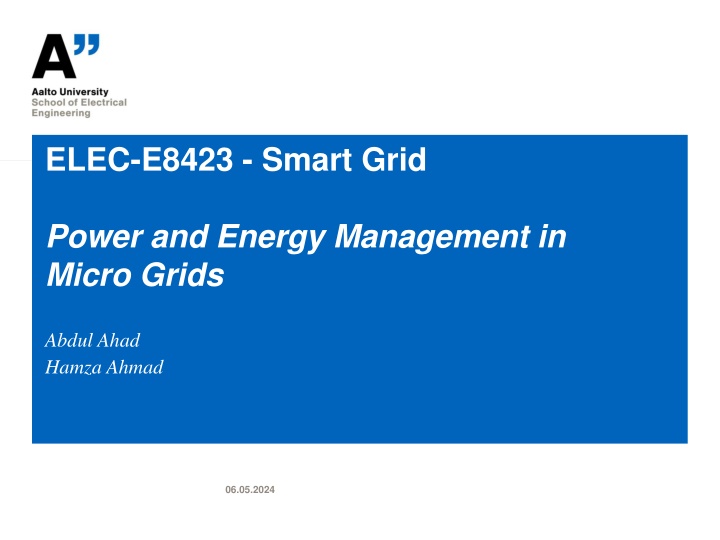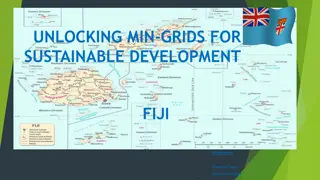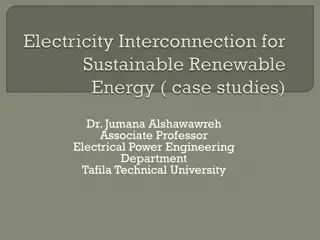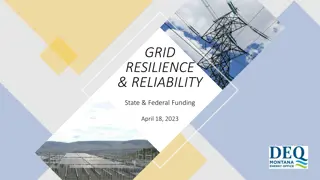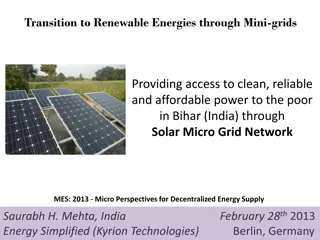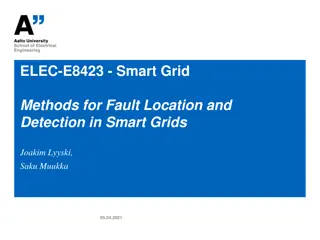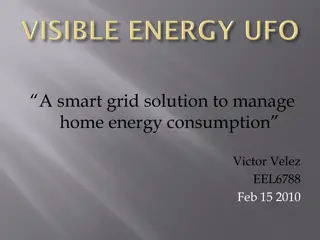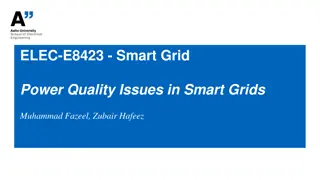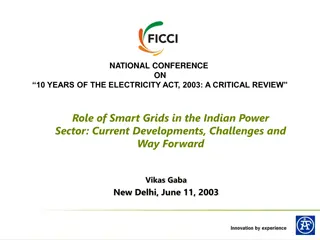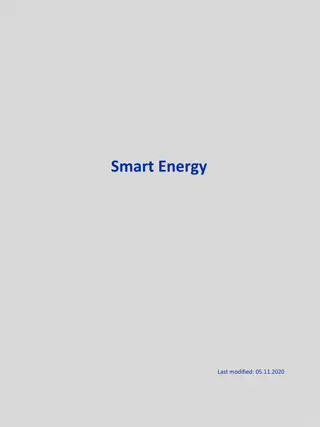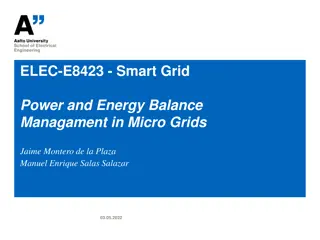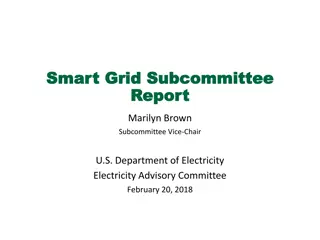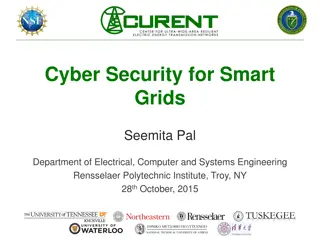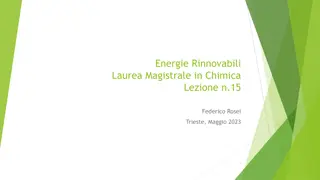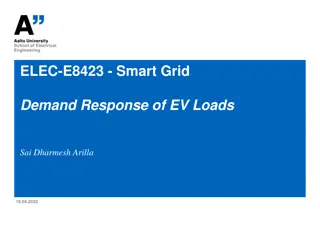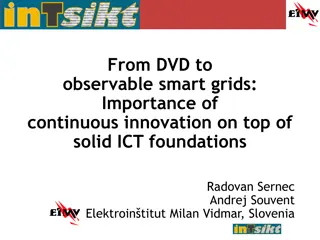Smart Grid Power and Energy Management in Micro Grids
A microgrid is a localized group of electricity sources and loads that can operate both connected to and disconnected from the centralized grid. This article explores the components of a microgrid, control schemes, and energy management systems for efficient power distribution. Learn about different control structures and the role of renewable and non-renewable sources in microgrid generation.
Download Presentation

Please find below an Image/Link to download the presentation.
The content on the website is provided AS IS for your information and personal use only. It may not be sold, licensed, or shared on other websites without obtaining consent from the author.If you encounter any issues during the download, it is possible that the publisher has removed the file from their server.
You are allowed to download the files provided on this website for personal or commercial use, subject to the condition that they are used lawfully. All files are the property of their respective owners.
The content on the website is provided AS IS for your information and personal use only. It may not be sold, licensed, or shared on other websites without obtaining consent from the author.
E N D
Presentation Transcript
ELEC-E8423 - Smart Grid Power and Energy Management in Micro Grids Abdul Ahad Hamza Ahmad 06.05.2024
What is a Microgrid? A microgrid is a localized group of electricity sources and loads that typically operates connected to and synchronous with the centralized grid (macro grid). A key distinguishing feature of micro grids is their ability to disconnect and function autonomously as physical and economic conditions dictate. More commonly known as grid- connected and islanded modes which provide resilience, reliability and flexibility to the energy system. 06.05.2024 Page 2
Components of a Micro Grid Generation Units Renewable sources: PV, Wind, Small Hydro and Biomass Plant Non-renewable sources: Emergency Generator, Micro turbine and Fuel Cell Storage Systems Batteries, Thermal Storage usually for power balancing Loads Controllable Loads: Electrical vehicles, Heating and Cooling, etc. Critical Loads: Data Servers, Hospitals, Illumination Control Systems SCADA, PLCs, Smart Inverters, Protection Relay, Switchgear 06.05.2024 Page 3
Power flow - hierarchical Control Structure 06.05.2024 Page 4
Control Schemes Centralized control Central regulator controls the distributed sources. Master slave relationship is a common illustration of centralized control. Single point of failure, decreased flexibility, reliability, and scalability 06.05.2024 Page 5
Control Schemes Decentralized control Local controllers control the microgrid's connected converters. Droop controllers are commonly used in decentralised control schemes. limitations such as the current sharing, system accuracy, and system stability which highly depends on the droop parameters 06.05.2024 Page 6
Control Schemes Distributed control This control scheme has features found in both central and decentralized control topologies. Local controller controls each unit that is connected to the microgrid. 06.05.2024 Page 7
Energy management system in Microgrid A microgrid s energy management system can monitor, analyze, and forecast power generation from distributed generation systems, load consumption, energy market prices, and meteorological factors, among other things. 06.05.2024 Page 8
Demand Management Effective demand management strategies help mitigate the variability of renewable generation and reduce reliance on fossil fuel-based backup generation. Load Shifting: Adjusting the timing of energy consumption to align with periods of abundant renewable generation, reducing reliance on grid electricity during peak demand periods Non-urgent loads, such as certain industrial processes or charging electric vehicles. Demand Response: Demand response programs incentivize consumers to adjust their electricity usage in response to signals from the grid operator or price fluctuations, contributing to overall demand reduction and grid stability. Energy Efficiency: Improving energy efficiency through technological upgrades and behavioral changes reduces overall energy consumption. 06.05.2024 Page 9
Storage Aggregated Energy Storage: Aggregating multiple energy storage units within the microgrid enables centralized control and optimization of storage resources. By pooling storage capacities, the microgrid operator can efficiently manage energy storage systems to balance supply and demand, support grid stability, and optimize economic performance Distributed Energy Storage: Distributed energy storage refers to the deployment of storage devices at various locations throughout the microgrid, often near points of generation or consumption. Distributed storage systems offer localized benefits such as voltage support, peak shaving, and load balancing, enhancing grid reliability and resilience at the distribution level. These distributed assets can be coordinated through hierarchical control structures to contribute to system-wide objectives while providing localized benefits. 06.05.2024 Page 10
Conclusions Microgrids provide us a better way to tackle future energy needs and dynamics by allowing on grid and off grid functionality. Different Control Structures and Schemes are available to efficiently and cost-effectively utilize microgrids. Demand Management and Storage further enhance microgrids allowing us to reap maximum benefits from renewable energy. 06.05.2024 Page 11
Source material used Zahraoui, Younes & Alhamrouni, Ibrahim & Mekhilef, Saad & Basir Khan, M. Reyasudin & Seyedmahmoudian, Mehdi & Stojcevski, Alex & Horan, B.. (2021). Energy Management System in Microgrids: A Comprehensive Review. Sustainability. 13. 10.3390/su131910492. Natesan, Chitra & Ajithan, S.K. & Chozhavendhan, S. & Devendhiran, A.. (2015). Power management strategies in microgrid: A survey. International Journal of Renewable Energy Research. 5. 334-340. Modu, B. et al. (2023) DC-based microgrid: Topologies, control schemes, and implementations , Alexandria Engineering Journal, 70, pp. 61 92. doi:10.1016/j.aej.2023.02.021. Eyimaya, S.E. and Altin, N. (2024) Review of energy management systems in Microgrids , Applied Sciences, 14(3), p. 1249. doi:10.3390/app14031249. 06.05.2024 Page 12
